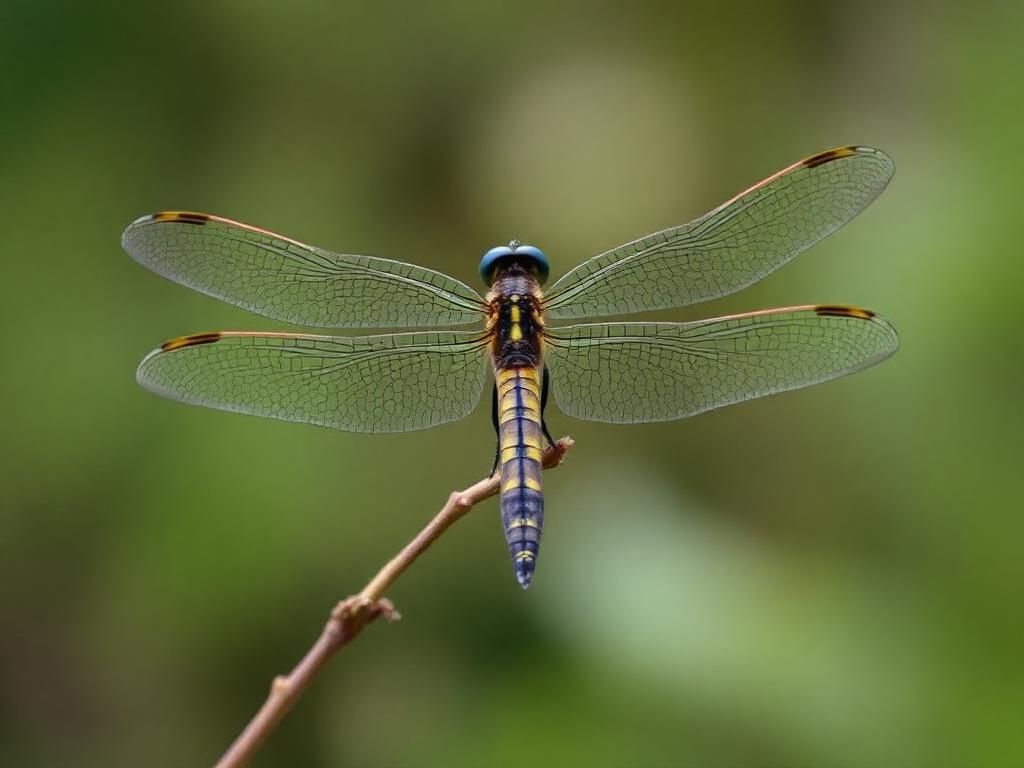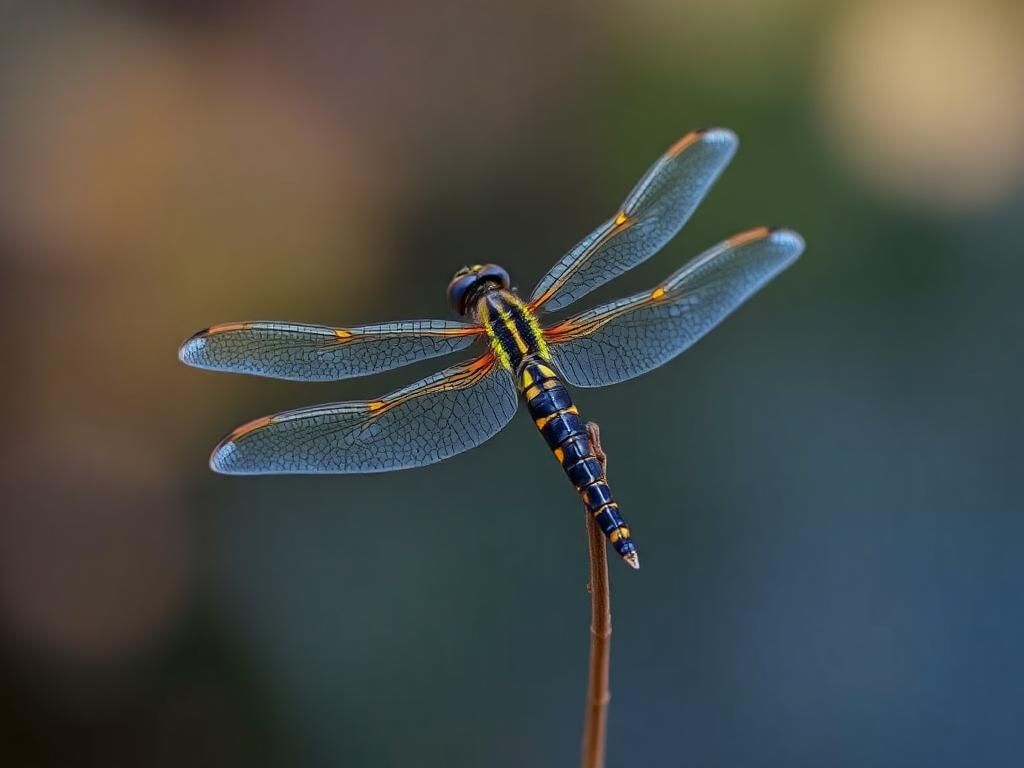Dragonflies are enchanting insects often seen flitting gracefully over ponds and lakes. With their vibrant colors and intricate wing designs, they have captured the imagination of many cultures worldwide. Beyond their aesthetic appeal, dragonflies are rich in symbolism and hold significant meaning in various traditions. This article explores what a dragonfly symbolizes across different cultures and contexts, revealing profound insights into change, transformation, and spiritual growth.
Overview of Dragonflies
Biological Characteristics
Dragonflies belong to the order Odonata, and they are known for their exceptional flying abilities. They possess *two pairs of wings*, which can move independently, allowing them to hover, fly backward, and even change directions swiftly. Their vibrant hues range from iridescent greens and blues to vivid reds and yellows, captivating those who observe them.
These insects primarily inhabit areas near freshwater, including ponds, lakes, and marshes. Dragonflies exhibit fascinating behavioral traits, such as hunting skills that make them highly effective predators. They consume a wide variety of insects, including mosquitoes and gnats, making them essential for pest control and ecosystem health.
Lifespan and Life Cycle
Understanding what a dragonfly symbolizes requires a glimpse into its life cycle. Dragonflies undergo a complex transformation known as *incomplete metamorphosis*. This life cycle consists of three primary stages:
1. **Egg:** Laid in water, the eggs hatch into nymphs, often within a few weeks.
2. **Nymph:** This stage lasts from several months to several years, depending on the species. Nymphs live underwater and are predators in their own right, feeding on various aquatic organisms.
3. **Adult:** Upon developing fully, nymphs undergo a final molt, emerging as adults with a lifespan that can range from a few weeks to several months.
The *transformative journey* from nymph to adult beautifully exemplifies the theme of change, which is central to the symbolism of dragonflies.
Cultural Significance of Dragonflies
Dragonflies in Native American Culture
In Native American traditions, dragonflies symbolize *change and transformation*. Their swift movements represent the ability to adapt to new circumstances. Various myths and stories highlight dragonflies as messengers of change, encouraging individuals to embrace life’s transitions with grace.
For instance, the Navajo people believe that dragonflies are associated with *dreams* and *water*, often interpreting their presence as a sign of emotional healing or the passing of a loved one.
Dragonflies in Asian Cultures
In Japanese culture, dragonflies symbolize *strength and courage*. They are often depicted in art and literature as heroic figures, embodying tenacity and resilience. Samurai warriors revered dragonflies, associating them with victory in battle.
In contrast, Chinese culture views dragonflies as symbols of *prosperity and good fortune*. They frequently appear in art associated with happiness and harmony, embodying the idea that embracing change can lead to a prosperous life.
Dragonflies in European Traditions
European folklore often associates dragonflies with mystical realms, including *fairy tales* and stories about elemental spirits. They represent patience and self-realization, as their graceful movements encourage observers to slow down and reflect on their journeys. The association with fairies enhances their mystique, where they are viewed as guardians of change and transformation.
Symbolism of Dragonflies

Transformation and Change
At the heart of what a dragonfly symbolizes is the theme of *transformation and change*. Their life cycle exemplifies personal growth and the ability to emerge stronger after overcoming challenges. In many ways, dragonflies encourage us to embrace our own transformations—a call for self-reflection and acceptance of changes in our lives.
Many individuals recount personal stories about their encounters with dragonflies during significant life transitions, viewing them as signs of encouragement or omens of positive change.
Adaptability and Resilience
Dragonflies are known for their adaptability and resilience, thriving in various environments. Their presence serves as a reminder to embrace life’s changes instead of resisting them. In this capacity, dragonflies symbolize the strength required to navigate life’s unpredictable nature.
By reflecting on the dragonfly’s remarkable qualities, individuals can draw inspiration to tackle their own challenges with *grace and persistence*.
Spiritual Insights
Spiritually, dragonflies represent *lightness and joy*. Their buoyant flight and shimmering presence evoke feelings of happiness and freedom. They are believed to connect individuals to the *spiritual realm* and encourage exploration of higher consciousness.
Seeing a dragonfly can be interpreted as a message from the universe, inviting us to seek inner peace and joy. This spiritual connection emphasizes a greater understanding of our life’s purpose, intrinsically tied to the essence of *transformation*.
Dragonflies in Literature and Art
Symbolic Representations in Literature
Throughout literature, dragonflies have been depicted as symbols of *transformation* and *freedom*. Their transient nature inspires writers and poets alike to explore themes of change, beauty, and life’s fleeting moments.
Classic works often feature dragonflies as integral motifs. For example, the dragonfly represents the passage of time in poetic literature, embodying the idea of embracing each moment as it comes.
Dragonflies in Visual Arts
In visual arts, dragonflies appear in paintings and sculptures, often representing purity and harmony. Artists frequently employ dragonfly imagery to convey deep emotional experiences and themes of liberation.
Contemporary art has also embraced dragonfly symbolism, using it to evoke a sense of peace and introspection. As a subject, dragonflies remind viewers to appreciate the beauty in life’s uncertainties and impermanence.
Practical Applications of Dragonfly Symbolism
Personal Growth and Transformation
Harnessing the symbolism of dragonflies can guide *self-improvement* efforts. Practices such as mindfulness and visualization can help individuals embrace their transformative journeys. Reflecting on personal experiences and growth moments can reveal a deeper understanding of one’s purpose and potential.

To integrate dragonfly symbolism into daily life, consider keeping a journal. Documenting feelings during times of change can provide clarity and perspective, ultimately guiding one through personal transformations with intention.
Nature Connection and Environmental Awareness
Understanding dragonflies’ ecological importance fosters a *connection with nature* and enriches conservation efforts. Dragonflies play a vital role in their ecosystems, and their health indicates overall environmental well-being.
Engaging in awareness campaigns or participating in conservation efforts can promote respect for nature and the ecosystems that sustain us. Understanding what dragonflies symbolize inspires us to advocate for their habitats and ecological responsibility.
| Aspect | Symbolic Meaning | Cultural Perspective |
|---|---|---|
| Transformation | Personal growth and adaptability | Widespread across various cultures |
| Resilience | Strength in facing challenges | Celebrated in Asian traditions |
| Joy | Lightness and happiness | Spiritual connection in many beliefs |
| Environmental Roles | Indicators of ecosystem health | Recognized in ecological studies |
Conclusion
In exploring what a dragonfly symbolizes, we’ve deciphered the meanings attached to these extraordinary insects. They represent *transformation*, *adaptability*, and a profound connection to the spiritual realm. The next time you see a dragonfly, take a moment to reflect on their message. They encourage us to embrace change, seek personal growth, and connect deeply with the world around us.
Further Reading and Resources
For those intrigued by the symbolism of dragonflies and their ecological importance, consider exploring the following resources:
– “The Dragonfly: A Symbol of Change” – [The National Wildlife Federation](https://www.nwf.org/)
– “Dragonflies in Art History” – [The Art Story](https://www.theartstory.org/)
FAQ
1. What does a dragonfly represent in different cultures?
Dragonflies symbolize change, adaptability, and transformation across cultures, offering various interpretations based on local traditions.
2. Are dragonflies a sign of good luck?
In many cultures, especially in Chinese traditions, dragonflies are seen as symbols of good fortune and prosperity.
3. How long do dragonflies live?
The adult lifespan of dragonflies typically ranges from a few weeks to several months, depending on the species.
4. Can dragonflies help control pests?
Yes, dragonflies are natural predators of mosquitoes and other insects, playing a vital role in pest control within ecosystems.
5. What does it mean if a dragonfly lands on you?
A dragonfly landing on you can be interpreted as a sign of transformation and a reminder to embrace change and personal growth.
6. How can I connect more with dragonflies?
Observing them in their natural habitats, gardening with water features, and advocating for their conservation can deepen your connection to dragonflies.
7. What ecological role do dragonflies play?
They are predatory insects that help maintain the balance of ecosystems by controlling pest populations and serving as indicators of environmental health.
8. Are there dragonfly myths in Native American culture?
Yes, many Native American tribes view dragonflies as symbols of change and healing, often incorporating them into stories and teachings.
9. What is the life cycle of a dragonfly?
Dragonflies undergo incomplete metamorphosis, transitioning through three stages: egg, nymph, and adult.
10. How can dragonfly symbolism promote personal growth?
By reflecting on the qualities of resilience and adaptability associated with dragonflies, individuals can foster personal growth and embrace life changes.
